JRPGs have been around for quite some time, but their golden era came a few years after the first few games of the genre got released. While many considering the SNES era as the golden era for JRPGs, with games like Final Fantasy IV and VI, Secret of Mana, Chrono Trigger and so on, there are others who see the PS1 era as the best one for JRPGs. The latter has been a great influence on Legrand Legacy: Tale of the Fatebounds, a new title developed by SEMISOFT (and funded on Kickstarter) to properly give homage to JRPGs released between the mid-90s and the early 2000s. This is, in truth, the game’s greatest achievement and greatest flaw at the same time, depending on how the player sees the lack of true innovation.
Legrand Legacy stars an amnesiac young man named Finn, a slave who is forced to fight inside the arena found in the town of Juble. Following an intense match where Finn emerges victorious, his freedom is bought by a mysterious old man who asks Finn to accompany him in a dangerous area. Little does Finn know that his journey will bring to discover his nature of Fatebound and his destiny as the world’s savior.
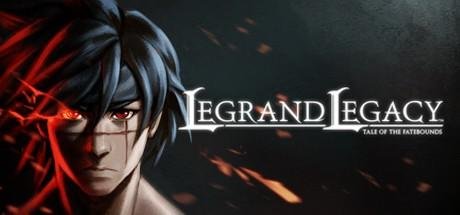
Legrand Legacy is a fantasy-themed game that is quite heavy as a foundation. And as you can predict, this adventure story that Semisoft offers will get you into a world of races, species, monsters, and various fictional powers like a fairy tale that you enjoy in childhood or fantasy novels that you wake up as a teenager or adult. A story that will indeed contain many sides of cliches, but still interesting to follow. It is the same thing Legrand Legacy conceives.
Opened with a bloody battle scene in an arena, you play a young man named Finn. In addition to his skillful fighting ability because of the muscle memory that still works so well, he does not remember much about what happened in his past. Just, name only. Fortunately, he was rescued by an elderly man with extraordinary magical ability who "hired him" to find a cure for the sickly daughter. Halfway down through the dangerous desert, they were attacked by bandits. The weak Finn ends unconscious and finds that his savior, already dead. He actually meets a mysterious female karaker, named - Aria.
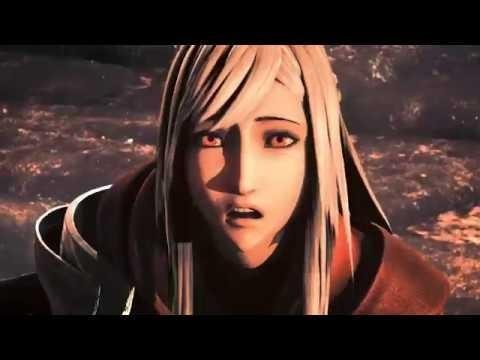
Source
Pledging to help Finn to find the rescue princess and deliver the needed medicine, Aria asks for her help to find a figure named Lazarus who allegedly lives in the same desert. The fight against such exhausting monsters eventually led them to the awaited spot, meeting directly with Lazarus who is believed to be one of the heroes of a long-standing war of the past. Aria believes that Lazarus holds the key to restoring peace within Legrand - the world in which they live. The female warrior with this arrow is called to resolve the increasingly heated northern conflict, involving two major Legrand countries that are now ready to take up arms until one side is crushed to its knees. Instead of just helping him, Lazarus comes with more shocking news.
That Aria and Finn, who managed to meet him, now enter into the early stages of fulfillment of a prediction that has been echoed long enough. That their destiny is more than simply restoring peace to Legrand from the hands of belligerent countries. A greater threat will arrive, making these wars feel like nothing more than just a child's toy. A race that had invaded Legrand in the past and was subdued by the cooperation of so many nations - Fir Bolgs is believed to be back. Aria and Finn are now required to collect 4 weapons in the past from the four corners of Legrand to prepare themselves. These weapons are also believed to restore the glory of Legrand itself.
So as predictable, they set out. During the journey, from one conflict to another, they appear as unplanned heroes. Slowly but surely, they begin to gather companions of different races to achieve a common goal, albeit sharing different motivations. The prophecy calls the group Fatebounds - ironically bound men of destiny, fighting fate that they may perish in the hands of a dark, dreadful force.
Then, this Fatebounds produce save Legrand? Who is actually a Finn who forgot the memory? What threats should they fight against? All answers to the question, of course you can get by playing Legrand Legacy this one.
Fascination Behind Visual Standards
How important is the visual quality for you, as a gamer? If it is one of the most important priorities, you may see Legrand Legacy with one eye. Because when compared with the release of new AAA games on the latest platforms, the visuals are not exactly comparable. The texture and character model he offers feels like a Playstation 2 game that is lifted into a high definition format using an emulator on a PC, a fact that is undeniable. But if you are willing to go deeper and dive, then you will understand that the attractiveness of his presentation is more than just the visual detail that he usung. Believe it or not, Legrand is an interesting world.
There are two things that deserve our thumbs up from the world offered by Legrand Legacy. First, of course lore. Although there are various issues from the side of the dialogue or characterization that we will discuss next, it is built on a world with an interesting story background. That he is a well thought-out fantasy story, although at some point, he does sound and quite cliche. SEMISOFT has succeeded in explaining it well and making sense of the background of the conflict, as well as providing a thorough perspective on the existence of the parties bound in it, from mere nations, races, to the gigantic monsters you meet along the way. Hearing the story of how an ancient race rode a dragon who was consciously perpetrating genocide over another nation for fear, became its own preoccupation.
Second? Of course the environment he was racik. As we know, in contrast to the standard three-dimensional model for the character that he stretches, Legrand Legacy offers the city and dungeons that you stop in the form of high definition hand drawings. Like the classic JRPG games, like the Final Fantasy era of the past, a two-dimensional world that feels something born of a creative brain and a brush is fantastic. Although it must be admitted some dungeons look unattractive because of the combination of colors that exist, but most of the city you singgahi will be enough to make your eyes termanjakan. The city is divided into various parts, but each of them comes with a cinematic enough camera angle. From a desert town with gigantic human lion statues in various corners, to a city filled with shouting after a festival is held. Each of them has their own unique identity. The good news? With a good little pointer and shading buttons, you will have no trouble distinguishing the inner world from a three-dimensional perspective, including a matter of altitude.
There is one thing we also love from the presentation side of Legrand Legacy. Although it was built for a global market with fantasy stories as a base, the developer still injects a kind of "easter egg" for local gamers in Indonesia. There are content, especially names, that will not feel special if you do not understand the language itself. It's hard not to smile when you see how the item you imagined turned out to be an agate whose name conjured up in such a way as to sound more fantasy. From "Aqeeq Stone" to a bandit organization called "Ram Poks", or a healing item called "Mengkhdu", there is a hidden reply to show identity as a local gam concoction. A standard that seems appropriate to follow more Indonesian developer concoction game targeting global market in the future. A "flicker" is enough to make the gamers homeland smile a little.
Though reinforced by the lack of exquisite visualization quality in existing character models, like the classic JRPG of the past, Legrand Legacy still offers something more than the animation side and of course, FMV to reinforce the story and the aesthetics of the game itself. You still remember the FMV - a short CGI-based video that often appears in the Playstation 1 RPG series when you get into certain important moments? It is also presented here. All the supporting characters you first encounter will be accompanied by a fraction of a second enough to give you a clearer picture of what they look like if you meet them in the real world. Regardless of the rigid motion in exploration, motion animation also looks more supple while fighting, especially when each of these characters launches their "special" attack called Arcana.
Thumbs up is also deservedly directed to anyone within the Legrand Legacy development team, assigned to cast the existing boss design. During the trip, some monsters do look weak and dull. But when your journey ends with a boss fight, it contains one of the best monster designs in the JRPG game we've ever encountered. There is something that feels epic in the battle against these big bodies that not only look threatening, but also blend with the legend and the story of Legrand itself. That this is a fantasy world that does not contain just fairies, but also giants, dragons, and wolves in the same world.
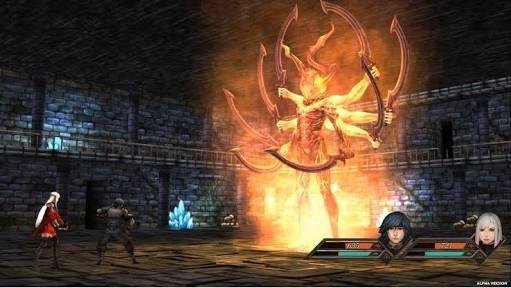
about Two Biggest Disadvantages
But of course, Legrand Legacy is not a perfect RPG game. But not because of technical problems and the like that amazingly, we did not meet throughout the review process. But rooted in two things that we think are too crucial to pass up. Two things are the system of weight management and dialogue.
As we know, the weight management system that limits the luggage of the main character / party in a certain amount is not a new mechanism in the world of RPG. Many gigantic RPG games like Skyrim or The Witcher 3 apply it and go natural. Legrand Legacy that makes crafting system the main way to get a stronger weapon with different scarcity at the same time to mix items when you do not have money, also presents this system. The point is of course to make you more sensitive to manage which important items are brought, let alone the middle of the type of material needed for the crafting process. But unfortunately, in this game, he just became one of the biggest problem that sucks. What happened?
The weight system in Skyrim and The Witcher 3 works for one thing - because basically you choose which items you want to pick up and which ones you want to leave behind. You have the freedom and power to do so. While at Legrand Legacy? It maintains a classical JRPG classic loot and material fall system, where all the material you get will automatically fit into your bag, adding heavy loads, with no chance of picking or refusing at all. The result? It is a mechanism that seems, not well thought out. Even worse news? Instead of making these crafting materials have insignificant weights that do not bother much, Legrand Legacy decided to make it at least weigh 1. Now imagine, if you only have a heavy limitation of 350 just at the beginning of the game, with 1 bout that can drop the material up to 8-10 weight. Exploring a single dungeon is enough to keep your bag full, even before you can store it in the provided Storage system.
So often you meet with annoying scenarios. When so many items healers come in, from healing to revive that you can not just throw away, start to confiscate a heavy portion that you can carry. When exploring the dungeon, with the habit of JRPG gamers who always want to fight with existing enemies for the grinding level process, you begin to discover that the material keeps automatically getting into your bag. Unwittingly, you find your bag full. The next step? Start sorting out which material or item you should throw away to make the main character run again, and not just walking. You will remove items that you consider unimportant, and open space for example, 20 new weight chambers. Slightly explore the same dungeon, fight with three enemy parties, and voila! your bag is full back. Happy wasting again!
The second serious problem? Is a dialogue. Quite understandable considering this is a game concoction of Indonesian developers, until there is a great possibility whatever the English smell becomes unnatural. Inevitably, it must be admitted that this also happened in Legrand Legacy. That the dialogue created between the various characters is filled with so much content that feels awkward and unnatural. How bad? Until a few points, the characters involved like a low-cost soap opera artist who was reading the script, though without voice acting at all.
Cool OST!
Talking about one of the extra elements that also makes us fall in love with Legrand Legacy is of course rooted in the soundtrack he offers. We all seem to have known that Semisoft managed to hook the famous OST NieR Automata singer through his flagship Chaos Language - Emi Evans into the ranks of their soundtrack fillers. Cooperation of both gave birth to the song "Suteki na Mono" is ready to make your hair goose bumps. More good news? It's not the only cool OST you hear during your Legrand rescue trip.
Legrand Legacy is filled with lots of cool OST that's been, one of the best parts of classic JRPG games. In keeping with the moment you meet, there will be ear-splitting companion music that also matches what you are viewing on the screen, even in a tense fighting state. Suteki na mono itself appears in the instrumental version to reinforce personal moments between several characters. His magical fantasy world also sometimes brings a full soundtrack of mysterious chant-chant that's ready to make your hair shiver or just placate, soothe your soul.
The thumbs-up is well worth the creative mind behind the Legrand Legacy music. Awesome!
Conclusion
Beyond initial expectations, Legrand Legacy ends up being a JRPG game with classic elements that offer a solid playing experience. That there is a clear impression that the developer mixed this game to revive a JRPG flavor approach that is getting faded with a great love. Melt many systems in the past titles, but retain their own unique identity to give birth to a fantastic blend. The combination of OSTs worthy of thumbs up, the level of difficulty that is quite challenging and demanding a certain strategic approach, to monster design and hand-drawn environments, it will meet the expectations of any classic JRPG fan. A turn-based JRPG game ready to keep you satisfied. We came with a sense of skepticism, and ended up writing this review with a big smile.
But of course, he is not perfect. Of all the things we tasted, the two greatest disadvantages lie in the annoying weight management system and also, the dialogue and story approach that feels so awkward and weird at some point. One other complaint is the loss of one of the RPG design standards that we think should be there - Equipment / Accessories to strengthen the character. Why? Because believe it or not, for now, there is no system that can be used to block the entry of status effect during the fight for example. If an enemy attack is a global attack affecting your three parties and generating so many status effects, such as Confused, Paralyze, or Poison for example, there is no preventive action you can take to prevent it from happening, which of course, nullifies the potential to deal with it in a more strategic move. And that, often the problem itself.
But outside of these shortcomings, Legrand Legacy becomes a RPG game of local developer concoctions that are worthy of your jajal. For a game valued at only 160 thousand Rupiah with tens of hours of content in it, its quality as a JRPG game also can not be underestimated. Believe it or not, this is a game that we would not mind to buy it in the price range of 250 thousand Rupiah though, for now. Believe it or not.

That's it reviews of the game from me. follow me @yomaunalaa to see other game reviews, thanks!!!


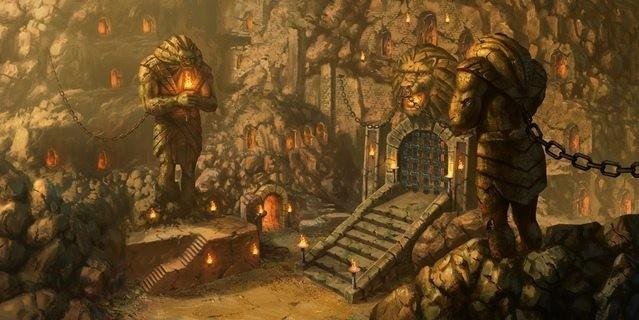
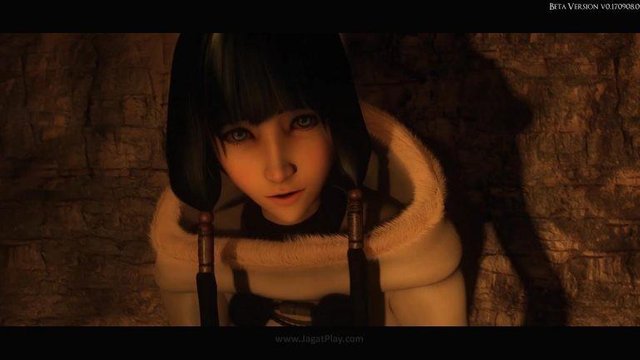
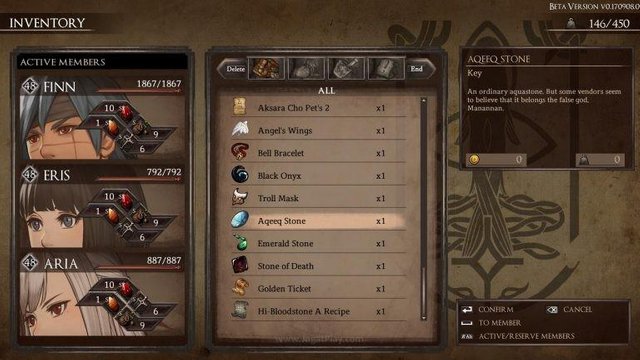
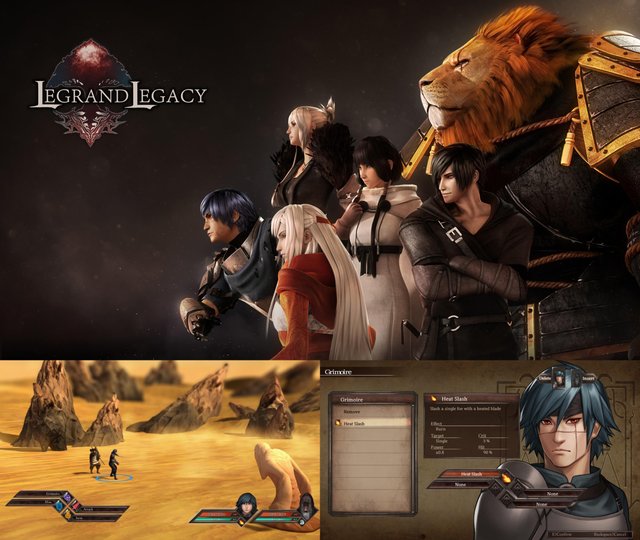
Good read ! I do game reviews too , you should check them out, definitely checking yours tho !
Downvoting a post can decrease pending rewards and make it less visible. Common reasons:
Submit